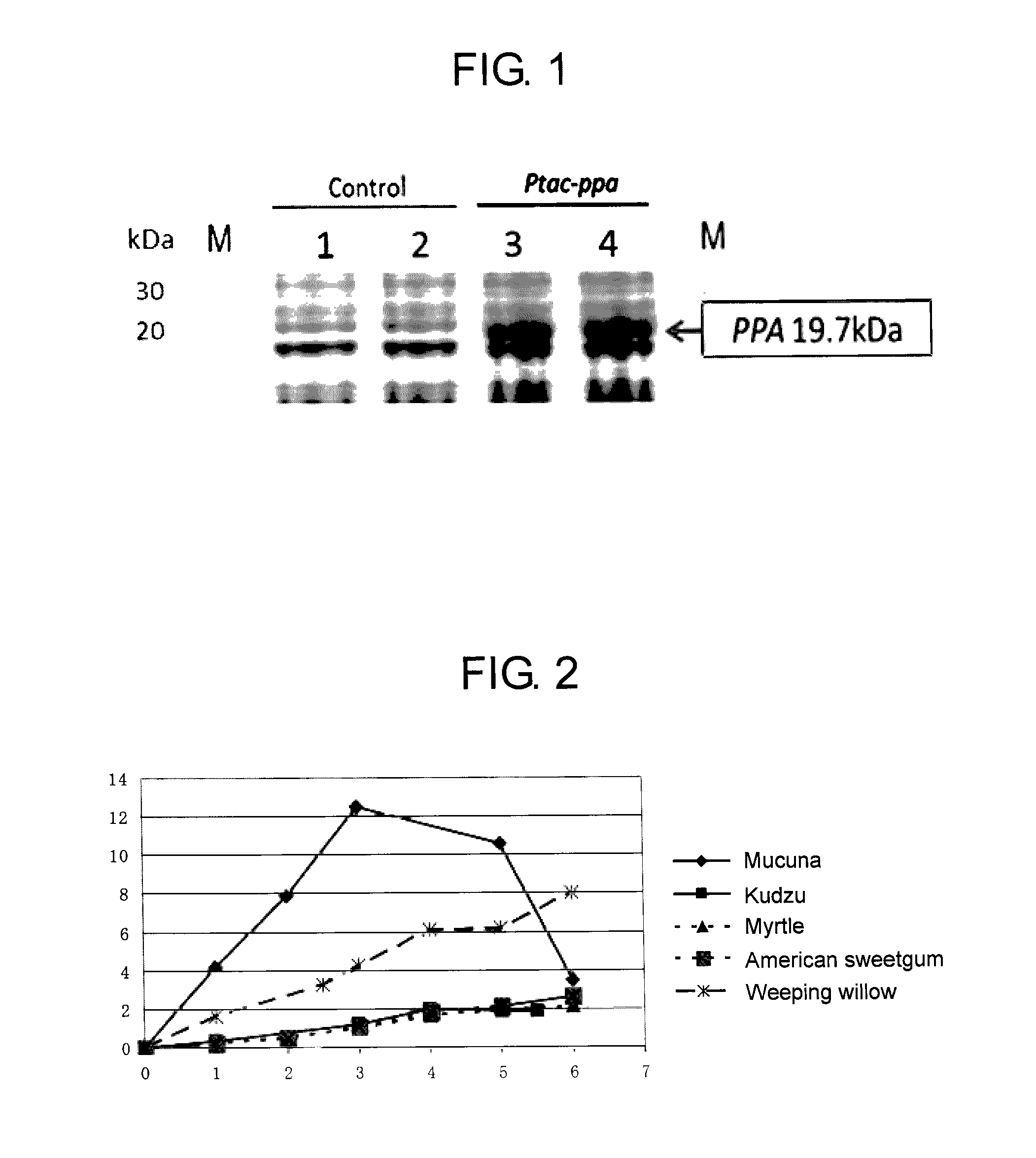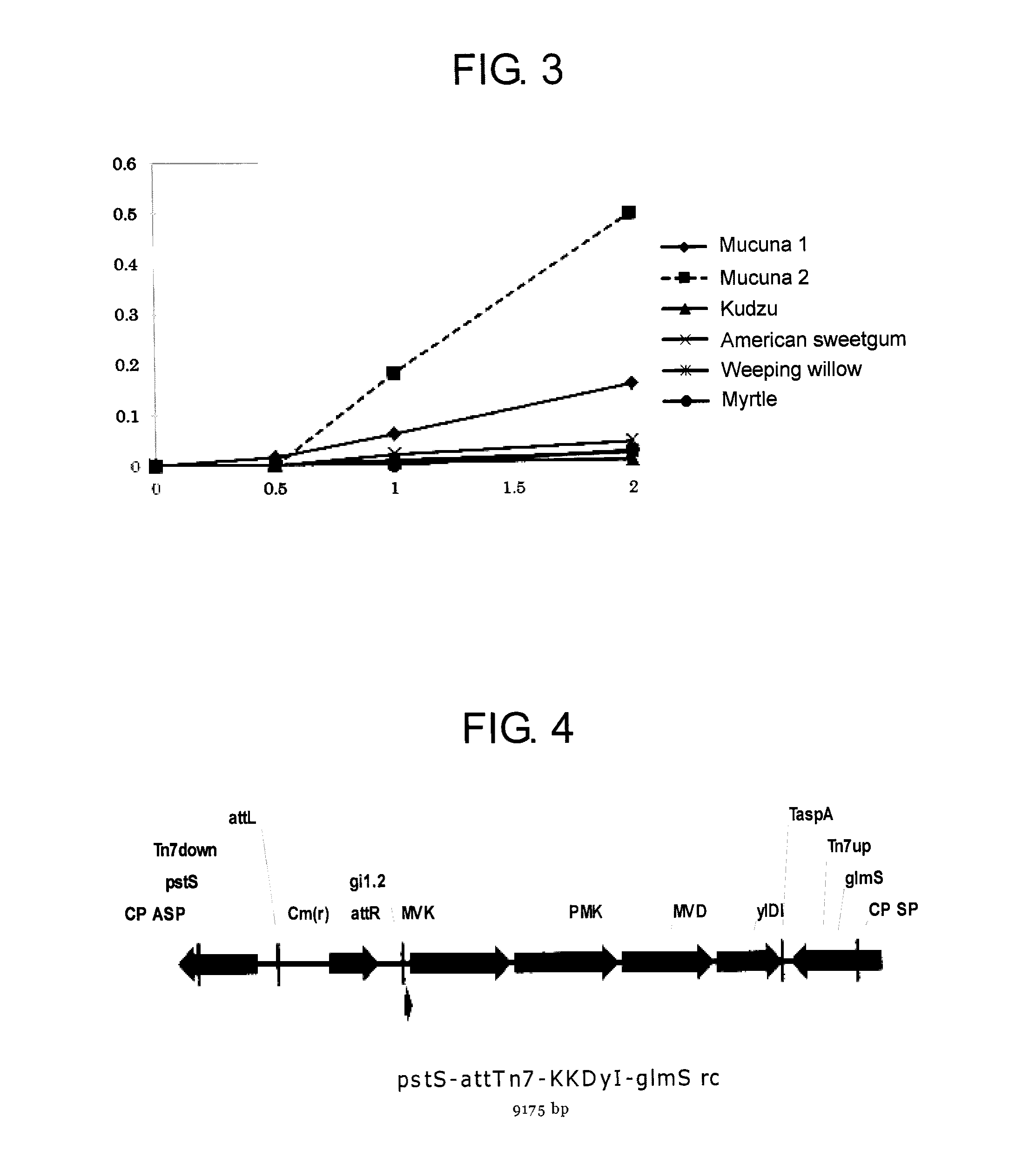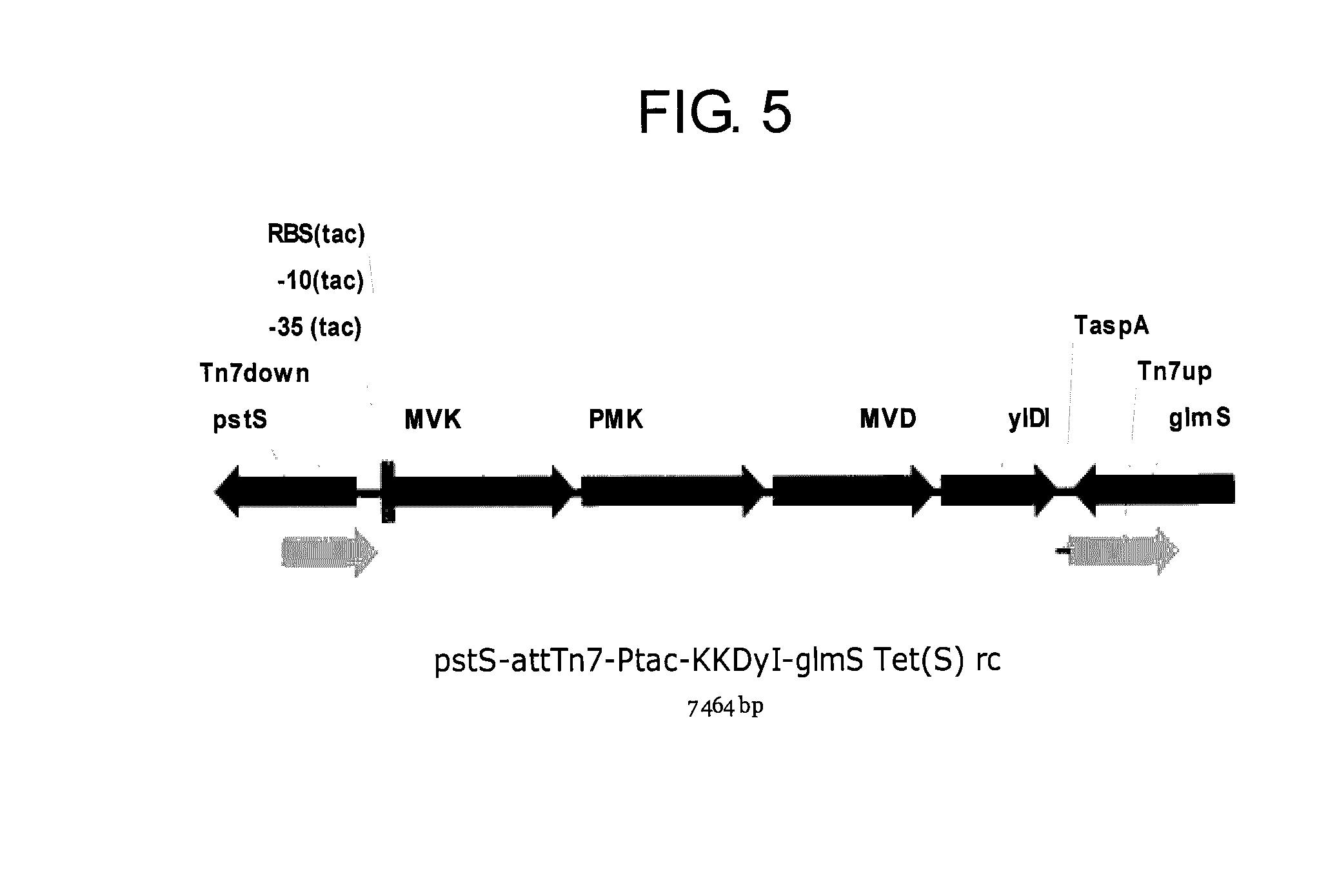Method of producing isoprene monomer
- Summary
- Abstract
- Description
- Claims
- Application Information
AI Technical Summary
Benefits of technology
Problems solved by technology
Method used
Image
Examples
example 1
Enhancement of ppa Gene Expression in MG1655 Ptac-KKDyI Strain
[0163]A Strain in which a Promoter Inherent to an Endogenous Ppa Gene (Pyrophosphate phosphatase gene) was substituted with another strong promoter to augment the expression of the endogenous ppa gene in E. coli strain was made by the following procedure.
[0164]First, competent cells of MG1655 Ptac-KKDyI strain (s Reference Example 7-4; this strain is a transformant of E. coli) for electroporation were prepared as follows. Cells of MG1655 Ptac-KKDyI strain were cultured with shaking in 5 mL of LB medium at 37° C. overnight. Subsequently, 50 λL, of the resulting cultured medium was inoculated to new 5 mL LB medium and cultured with shaking at 37° C. until absorbance at OD600 became around 0.6. Then, the microbial cells were collected, washed three times with ice-cooled 10% glycerol, and finally suspended in 0.5 mL of 10% glycerol to use as the competent cells.
[0165]Next, pKD46 was introduced into the competent cells of MG16...
example 2
Analysis of PPA Expression in MG1655 Ptac-KKDyI Ptac-Ppa Strain
[0169]The expression amount of a protein of the pyrophosphate phosphatase (PPA) in MG1655 Ptac-KKDyI Ptac-ppa strain was confirmed by SDS-PAGE. Cells of MG1655 Ptac-KKDyI strain and MG1655 Ptac-KKDyI Ptac-ppa strain were cultured with shaking in 5 mL of LB medium at 37° C. overnight. The microbial cells after being collected were washed three times with ice-cooled 50 mM Tris buffer (Tris-HCl, pH 8.0), and disrupted using a sonicator (Bio-ruptor: ON for 30 seconds and OFF for 30 seconds for 20 minutes). The disrupted cell solution was centrifuged at 15,000 rpm for 10 minutes to remove cell debris. The resulting supernatant fraction was used as a soluble protein fraction. The soluble protein fraction was quantified by Bradford method, and 5 μg of the soluble protein was electrophoresed on SDS-PAGE (NuPAGE: SDS-PAGE Gel System supplied from Invitrogen). Subsequently, CBB staining and decoloration were carried out according ...
example 3
Construction of MG1655 Ptac-KKDyI Ptac-Ppa / pSTV28-Ptac-ispSK / pMW-Para-mvaES Strain
[0170]Competent cells of MG1655 Ptac-KKDyI Ptac-ppa strain for electroporation were prepared as follows. Cells of MG1655 Ptac-KKDyI Ptac-ppa strain were cultured with shaking in 5 mL of LB medium at 37° C. overnight. Subsequently, 50 μL of the resulting cultured medium was inoculated to new 5 mL LB medium and cultured with shaking at 37° C. until absorbance at OD600 became around 0.6. Then, the microbial cells were collected, washed three times with ice-cooled 10% glycerol, and finally suspended in 0.5 mL of 10% glycerol to use as the competent cells.
[0171]An isoprene synthase-expressing plasmid derived from kudzu, pSTV28-Ptac-ispSK (see Reference Example 3-5) was introduced into the competent cells of MG1655 Ptac-KKDyI Ptac-ppa strain by the electroporation under the above condition. Subsequently, 1 mL of SOC medium was added to the competent cells, which were then cultured at 30° C. for 2 hours, and ...
PUM
| Property | Measurement | Unit |
|---|---|---|
| Temperature | aaaaa | aaaaa |
| Volume | aaaaa | aaaaa |
| Volume | aaaaa | aaaaa |
Abstract
Description
Claims
Application Information
 Login to View More
Login to View More - R&D
- Intellectual Property
- Life Sciences
- Materials
- Tech Scout
- Unparalleled Data Quality
- Higher Quality Content
- 60% Fewer Hallucinations
Browse by: Latest US Patents, China's latest patents, Technical Efficacy Thesaurus, Application Domain, Technology Topic, Popular Technical Reports.
© 2025 PatSnap. All rights reserved.Legal|Privacy policy|Modern Slavery Act Transparency Statement|Sitemap|About US| Contact US: help@patsnap.com



